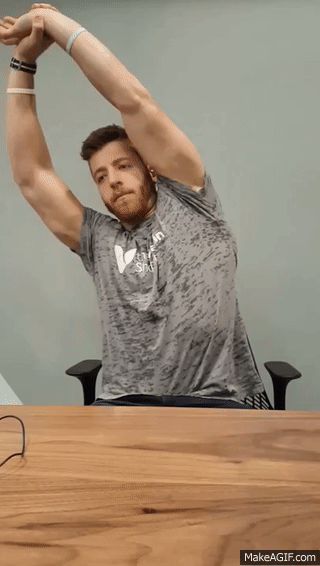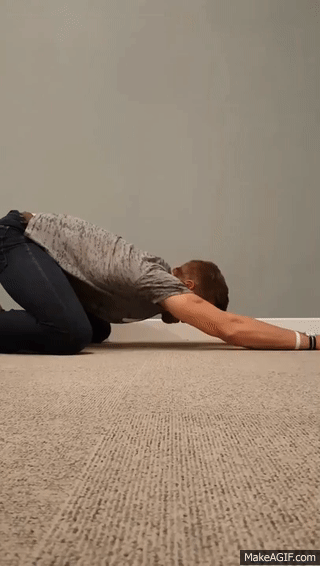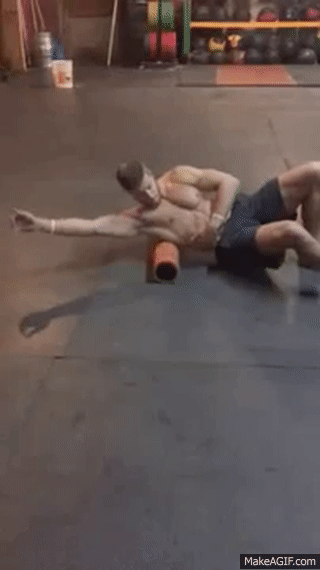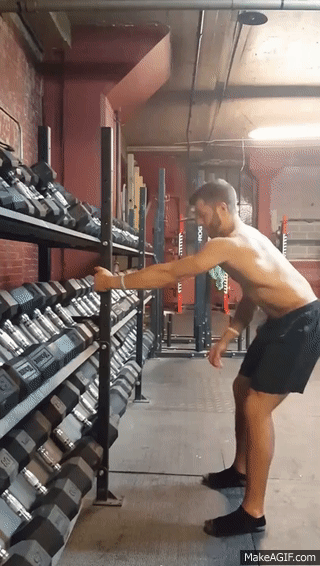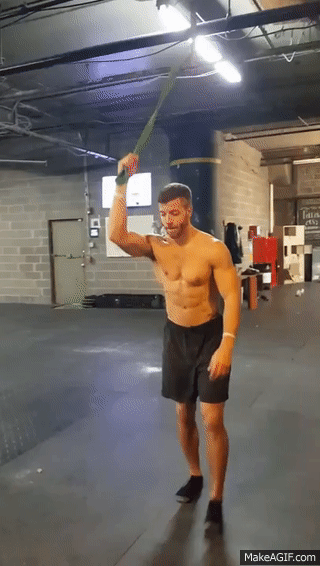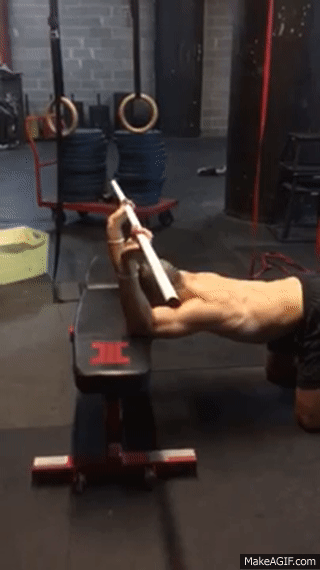In weightlifting the cue “quick elbows” is typically easily understood, but can be difficult to perform. Unlike a static cue such as, “turn your toes out,” that involves a quick change in body position, “quick elbows” is heavily dependent on one’s lat mobility.
Unfortunately, a lot of strength athletes don’t get paid to workout. This then leads to mobility taking a hit in the hours spent behind a desk or working jobs that limit movement. One of the bigger issues the casual weightlifter experiences is the ability to keep their elbows up in the catch and front squat portions of a clean. Nothing can be more frustrating than missing a a great lift due to collapsing elbows.
Collapsing elbows is often a sign of poor lat mobility. As we sit longer and longer, we tend to become more internally rotated (shoulders curved in with a slouched posture/tight pecs). This then leaves us in less than optimal positions for successfully executing Olympic lifts. Opening the lats will not only improve your clean, but will also improve other lifts that rely on the lats to produce force.
If you’re like me and struggle to maintain good lat mobility, here are six movements you can use to improve your lat mobility. I’ve included two of my favorite movements to perform at work, then four before workout lat stretches.
At Work
1. Seated Overhead Reach
This stretch always reminds me of elementary school gym class, but it feels so good. If you find yourself typing all day, set a timer for every 30-minutes. When the timer rings, scoot back from your keyboard, and perform 3-sets of overhead reaches.
I personally like to hold mine for 5-10 seconds on each side and gently pull the arm backwards and forwards to hit multiple parts of the lat, shoulder, and back.
2. Child’s Pose with Alternating Lat Stretch
This is one I’ve used since practicing yoga once a week. The added alternating reach is a tip I learned from California Strength, and is a great addition to the pose.
To begin, push your knees out and sit into your hips. You’ll then walk your hands out in front of you, hold for five seconds, then walk your hands to the left followed by the right, both with five second holds (think lean into the stretch). Repeat this 3-4 times. With this stretch you’re hitting the hips, lats, and thoracic back – win, win, win.
*Pro Tip: Try to find areas of your work space that don’t get walked on that frequently. Also, carpet is always a plus.
Before Workout
1. Lat Foam Roll
Take a foam roller, lean towards one side and gently rock back and forth hitting areas of the lat you feel tight in. This won’t be easy for a lot of athletes who are very tight, so go slow and ease into the rolls progressing with pressure.
Roll slowly for 2-3 minutes on each lat, and make sure to use varied pressures.
2. Rack Stretch with Varied Heights
For this movement find a rack or stable object to hold on to. You’re going to grip at multiple heights fully extending the arm, then pushing the hips back to produce a stretch. Hold each stretch for 4-7 seconds, or more if you feel tight.
I’ll typically grip at two different heights during this stretch, as I find this opens up the lat well for me. If you’re extremely tight, you can use multiple grips and holds during your stretch, even with two hands.
3. Overhead Band Stretch
Now that you’ve performed two movements to warm-up and open the lats, move to an overhead cable stretch. I put this movement after the rack stretch, as the cable is less stable, and you can have it assist achieving even more mobility.
Perform 4-5 stretches on each arm for 5-second holds. Gently breathe and ease into the stretch with each rep. Pay attention to the amount your arm is bending, as you don’t want to compensate the stretch for an arm that’s too bent.
4. PVC Bench Lat Stretch
The final movement before beginning a lift involves a stick (PVC typically) and a bench. You’re going to grip the stick roughly where your clean grip would be (sometimes narrower) and kneel by a bench. Place your elbows on the bench and gently drop into a prayer like pose. Perform five stretches, holding each for 3-5 seconds.
Something I personally like to do is switch my grips on the stick. Although, this can irritate some athlete’s shoulders if there’s been previous injury. This being said, begin with a grip with your palms up on the stick. If this feels alright with no pain, then you can try this stretch with palms out, similar to the clean grip.
*Remember to always ease into each stretch and to not drop rapidly into the final position.
Wrapping Up
If you’re someone who struggles to keep their elbows high/up during cleans and front squats, then this mobility regimen may be what you need to add into your daily routine.
You can perform these drills everyday, even on non-Olympic/front squats days and with time, your mobility will begin to improve.
Feature image: @ericalivoti Instagram page.
